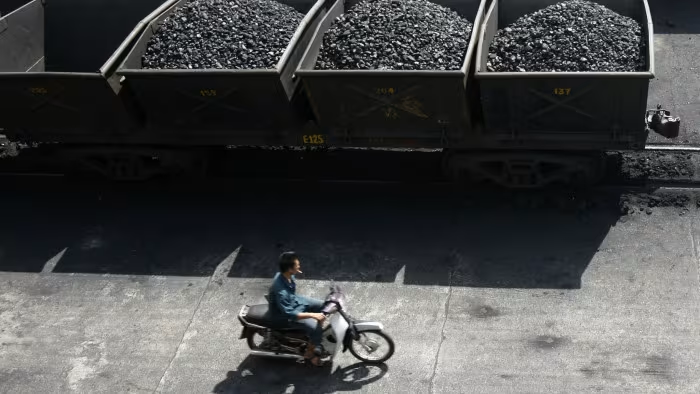Dark clouds of power outages in Vietnam cover the country's business environment
Vietnam's power crunch has dimmed its business prospects in the country, with experts saying there could be another blackout in 2024 due to delays in power plant construction and grid restrictions.。
Vietnam is one of Asia's fastest growing economies, and a power outage this summer disrupted the lives of millions of residents, casting a shadow over the country's business prospects.。At present, the Vietnamese government is stepping up efforts to stabilize the power supply。
Power outages sweep down factory output across the country
The summer heat is understood to have dried up reservoirs at major hydropower stations in northern Vietnam, and demand for electricity has risen sharply as air conditioning has been turned on in shops, offices and homes, triggering power outages across the country, affecting the daily lives of families and forcing many factories to operate restrictively, with growing concerns about similar risks in the coming years.。
Honda Vietnam, a car and motorcycle maker based in Vietnam's northern province of Vinh Phuc, said production fell after being asked to cut energy consumption at two plants in the region by 20 percent each.。
An insider at the company said: "We are concerned that similar outages will occur in the future as they could significantly affect the company's business plans.。It is hoped that the relevant departments will come up with short-term, medium-term and long-term solutions to deal with the power shortage and ensure a stable power supply.。"
Internal and external efforts Vietnamese government "open source" to rescue the market
In order to diversify energy sources and increase power supply, Vietnam Petroleum and Natural Gas Company (PV Gas) received the first batch of LNG in July.。It is reported that this batch of liquefied natural gas from oil giant Shell (Shell), in addition, PV Gas also held talks with ExxonMobil (ExxonMobil) and Russia's Novatek (Novatek) on the supply of liquefied natural gas.。
According to the National Power Development Plan (PDP8) released in May this year, Vietnam aims to build and operate 13 LNG power plants by 2030 as part of the government's energy transition plan.。By 2030, LNG power generation will reach 22.4 gigawatts, or nearly 15% of its energy mix。
At the same time, the Vietnamese government has approved a plan to invest about 270 trillion Vietnamese dong ($11 billion) to expand Vietnam's oil and gas storage by 2030, aiming to increase its net import capacity from the current 65 days to 75-80 days.。
In addition, the Vietnamese government wants to take advantage of the rich solar and wind resources in the central part of the country.。In July, Prime Minister Pham Minh Chinh asked Vietnam Electric Power Company (EVN), which has a monopoly on power distribution, to start operating a transmission line with a voltage of up to 500 kV by June 2024, connecting the central region with the energy-hungry northern region, a year earlier than scheduled.。
People from all sides call for digging deep into Vietnam's power "iceberg"
However, professionals predict that Vietnam may still be subject to power constraints next year and beyond.。
EVN, which recently said energy shortages could repeat themselves in 2024 and 2025, suggested buying more power from neighboring Laos.。In addition, a special parliamentary oversight group investigating the country's energy situation recently noted that the risk of power shortages could persist in the short to medium term, as long as or until 2050.。
Dao Nhat Dinh, permanent member of the scientific editorial board of the energy magazine Nang Luong Viet Nam, said: "The cancellation or postponement of the construction of new power plants is one of the reasons for this power shortage, and the progress of grid construction is also stagnant... These reasons have not been resolved.。"
Protests against the use of coal-fired fuel, as well as weak local banks, coupled with financing difficulties brought about by the withdrawal of global financing institutions, have caused delays in almost all coal-fired power projects in Vietnam.。Environmentalists and others urge international lenders to stop funding coal power projects。

In other respects, talks between some renewable energy and LNG plant developers and EVN have stalled due to the lack of up-to-date pricing options.。
Dao Nhat Dinh also added that LNG power plant projects could miss deadlines due to site cleanup delays, limited prospects for banks to provide financing, and underdeveloped power grids.。Unattractive pricing policies are another problem, "low selling prices discouraging foreign investors."。
Tran Viet Ngai, chairman of the Vietnam Energy Association, is pessimistic about the feasibility of PDP8, as the plan has not yet clearly mapped out the project's developers, financing channels or incentives.。"The Vietnamese government plays an important role in site clean-up, investment policy and financing.。One solution is to tender for the PDP8 project, select competent developers and ensure its progress and quality, "Ngai explained.。
Meanwhile, foreign businesses say a stable and reliable supply of electricity is essential to their operations in the country.。Some of these companies have suggested that industrial parks be allowed to produce their own solar and wind energy, but the Ministry of Industry has not yet approved the proposal.。
Adam Sitkoff, executive director of the American Chamber of Commerce in Hanoi, said: "This is the most timely means to respond to demand in the context of power shortages.。"
Marko Walde, chief representative of the German Business Mission in Vietnam, agreed, saying: "This approach allows companies to be more self-reliant and more resilient in the event of possible power outages.。"
·Original
Disclaimer: The views in this article are from the original Creator and do not represent the views or position of Hawk Insight. The content of the article is for reference, communication and learning only, and does not constitute investment advice. If it involves copyright issues, please contact us for deletion.